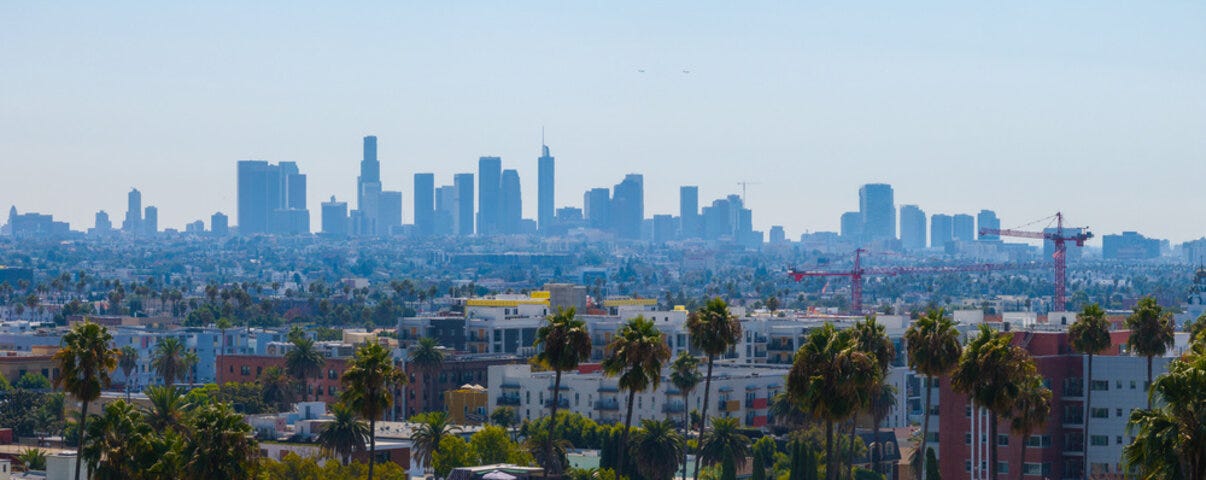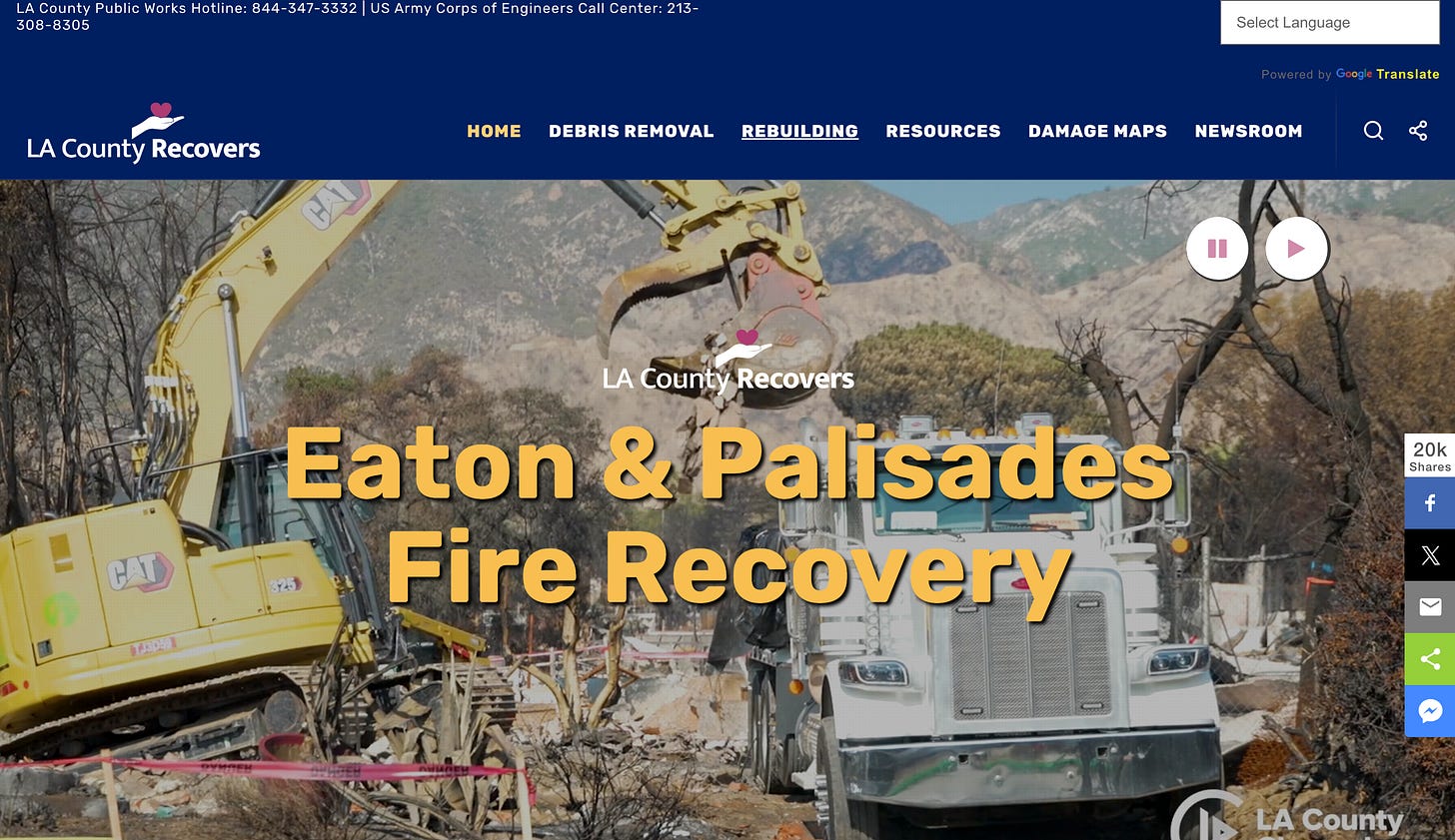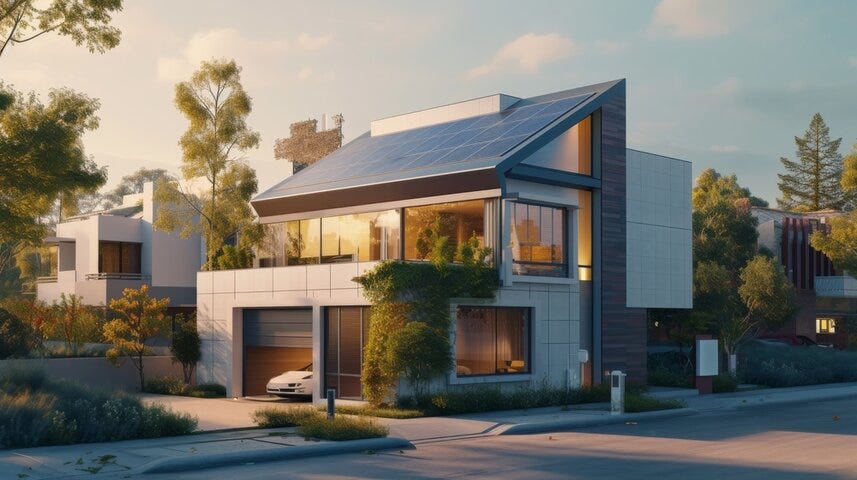Not-So-Weird Tricks to Dodge Fiscal and Fire Disaster
Josh Lappen, Ph.D., explains how removing gas lines and undergrounding electric lines could be a win-win for Los Angeles, insurers and even the regional utility company.
Many Climate Action California volunteers live in or near the burn areas in Los Angeles, and we send our Angelenos all best wishes as some of us are still displaced. We have been working with LA community groups and other allies since mid-January urging municipalities, developers, and individual property owners to rebuild without dangerous, climate-wrecking fossil gas infrastructure where feasible. This article by Josh Lappen, Ph.D., makes a strong case for building back electric in order to preserve the financial viability of SoCalGas, the regional gas utility. We thank Dr. Lappen for giving us permission to post this, the “long version” of a piece he has published in HeatMap News.
–Janet Cox, CEO
Climate Action California
Avoiding Fiscal Crisis by Building Fire-Safe Neighborhoods: Gas Removal and Electric Undergrounding
by Josh Lappen
Overview: Without targeted policy interventions, rebuilding Los Angeles’ burn zones could lead to a financial crisis that will impact all of Southern California. New buildings will use far less natural gas than their pre-fire predecessors, reducing gas revenues without proportionally shrinking gas-system costs. This risks pushing the gas utility towards insolvency. The only way to prevent rebuilding from destabilizing the gas system is to remove the gas network in fire-impacted areas. This solution also creates opportunities to solve or mitigate other urgent post-fire problems, including fire safety, speed and cost of rebuilding, and insurance market stability.
Current Situation:
In many burned zones, a small fraction of the original building stock has survived the fires. As burned buildings are rebuilt, the state building code and a wide variety of state and federal incentives together make it highly likely that most if not all new structures will be all-electric.
This means that the local natural gas distribution network will be supplying a small fraction of previous demand, but will still require the same level of spending on maintenance and safety.
Though decarbonization policymakers had believed they had more than a decade to avoid these risks, the recent fires have accelerated that timeline dramatically.
The mostly-electric neighborhoods that result pose a clear threat to the financial stability of SoCalGas, the regional gas utility. Gas networks only function safely and economically when costs are widely shared. Without a broad foundation of demand, the gas utility risks entering a cost spiral, in which rates rise and ratepayers exit, creating an affordability and equity crisis and potentially leaving major stranded assets in need of public remediation or bailout. Alternately, the gas utility could attempt to avoid raising rates by reducing maintenance, increasing the risk of gas leaks or explosions. These risks are well-studied in the context of decarbonization policy and are widely considered a significant threat to ratepayers, public balance sheets, and public safety.
Though decarbonization policymakers had believed they had more than a decade to avoid these risks, the recent fires have accelerated that timeline dramatically.
Solution and Benefits:
The only cost-effective, safe, and equitable solution is to ensure that the gas network’s maintenance costs shrink to match gas consumption and revenues. “Branch pruning” allows for removal of a portion of the gas pipeline network to reduce financial and safety liabilities to the future system, substituting universal all-electric service in the pruned zone. Policymakers should pursue this approach by ending natural gas service in burned and high-risk zones. This approach also comes with major co-benefits that further aid in the burned areas’ recovery and resiliency:
Affordable Burial of Electric Lines: Pruning back the gas system unlocks the opportunity to more cheaply bury local electric distribution lines. Electric lines are a major source of fire ignitions, including potentially in the Eaton Fire. Moving overhead lines underground is a proven safety solution but is normally cost-prohibitive, in part because of the difficulty of hand-digging around existing gas pipelines. By removing those gas pipelines, policymakers can significantly lower the cost of burying electric lines, cost-effectively removing two major fire risks at once.
Risk Mitigation for Insurers: By provably mitigating two different major fire risks in these neighborhoods, this action can also contribute to stabilizing the California fire insurance market.
Making systemic changes to improve neighborhoods’ fire safety and lower ignition risk offers insurers a bankable reduction in their future exposure to massive fire liability, bolstering insurers’ confidence in these neighborhoods’ — and California’s — future insurability.
Consumer Savings and Housing Affordability: Utility bills and fire insurance are major monthly expenses for all Californians, whether paid directly or indirectly through rents. This action helps to prevent both utility and insurance costs from rising, both inside and outside the burn areas, protecting ratepayers and residents. This action also reduces local government costs by simplifying infrastructure and reducing the risk and complexity of single-structure fires.
Rebuilding Cost and Time Savings: All-electric buildings cost less to build and can take less time to complete. Builders can avoid the delays inherent in coordinating with the gas utility, while saving thousands of dollars in gas-line installation costs. Enforcing all-electric building standards in burned areas will accelerate the creation of new homes for displaced residents, while freeing up both utility resources and skilled construction workers for other recovery projects.
Affordable Decarbonization: This action also allows California to affordably accelerate its decarbonization, reducing the risk of even more extreme wildfire conditions in the future. Fire conditions are being dramatically worsened by greenhouse gas emissions. Burning natural gas in buildings is not only a fire risk; it is also one of California’s largest emissions sources. Pruning back the gas system in burned and high-risk areas would not only be the largest building-decarbonization action in state history, but would also be far cheaper than decarbonizing the same buildings once new gas appliances have already been purchased and installed.
The only cost-effective, safe, and equitable solution is to ensure that the gas network’s maintenance costs shrink to match gas consumption and revenues.
Necessary Actions:
1. Ensure Widespread Electrification: If state and municipal leaders suspend all-electric construction mandates, they will neither avoid the approaching financial crisis for the region’s gas system, nor facilitate faster and cheaper rebuilding. Existing electric construction mandates in the State Building Code and Municipal Codes must remain in force, and state policymakers should accelerate adoption of the 2025 Building Code to ensure that all rebuilding projects are subject to the same rigorous all-electric building standards.
2. Decommission the Gas Network in Burned and High-Risk Areas: There are two possible ways to shrink the gas system in affected areas. The Public Utilities Commission (PUC) could remove these zones from SoCalGas’ service territory and order the utility to set a schedule for ceasing service. Alternately, the state legislature could legislate a standard and process for ending gas service in burned and high-risk fire areas.
3. Transition Surviving Buildings Off of Gas: Though robust state and federal subsidies for building electrification already exist, utilities and policymakers must together establish programs for guaranteeing that these subsidies are well-known in the affected zones, and that all owners of surviving buildings are aware of the timeline for ceasing service. The state legislature, PUC, and electric utilities should collaborate to establish a comprehensive education and installation campaign to ensure universal electrification of surviving buildings.
4. Bury Electric Distribution Lines in Burned and High-Risk Areas: Within the cities of Los Angeles, Glendale, and Pasadena (and other municipal-utility territories around the state), municipal utilities can establish undergrounding programs directly. In investor-owned utility territory, the PUC should order an undergrounding program, subject to earthquake considerations. The PUC or Energy Commission should also conduct a study on the proposed practice of using decommissioned gas pipelines as electric line conduits. If advantageous, the PUC should facilitate the sale of decommissioned pipes to the electric utilities.
Josh Lappen is a postdoctoral researcher at the University of Notre Dame, where he studies the growth and shrinkage of energy systems and the consequences for climate policy. He is also a lifelong Angeleno.
Contact: Dr. Josh Lappen, Notre Dame University, jlappen@nd.edu









